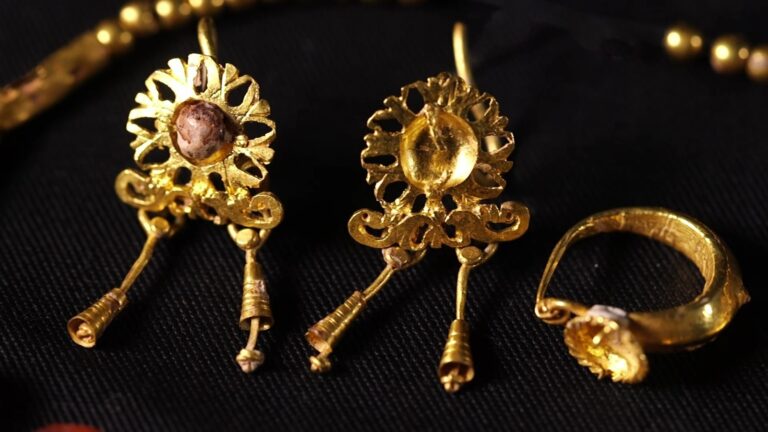The jewelry, worn by young girls as amulets, was discovered in 1971 and presented to the public for the first time last week.
Rare jewelry dating from 1,800 years ago, discovered decades ago in a burial cave in Jerusalem, was recently unveiled to the public by the Israel Antiquities Authority.
First discovered in 1971, the precious stash was displayed for the first time at the 48th Archaeological Congress in Jerusalem, organized by the Israel Antiquities Authority in cooperation with the Israel Exploration Society and the Israel Archaeological Association.
The gold earrings, hairpin, gold pendant, gold beads, carnelian beads and glass bead were found inside a lead coffin on Mount Scopus in an excavation led by the late archeologist Yael Adler.

Ayelet Dayan, head of the IAA Research Department, recently renewed the study of the unusual discovery along with Ayelet Gruber and Yuval Baruch.
They discovered that the young girl buried in the coffin was likely surrounded with jewels in order to protect her in the afterlife against the evil eye. Two similar gold earrings were discovered in another archeological dig on the Mount of Olives in 1975.
“These jewelry items are associated with the Roman world, and characterize young girls’ burials. Late Roman Jerusalem — renamed Aelia Capitolina — had a mixed population that reached the city after the destruction of the Jerusalem Temple and the evacuation of the Jewish population,” the researchers said in a statement.

“People from different parts of the Roman Empire settled in the city, bringing with them a different set of values, beliefs and rituals. The pagan cult of the city’s new population was rich and varied, including gods and goddesses, among them the cult of the moon goddess Luna.”
Originally posted at israel21c.org
